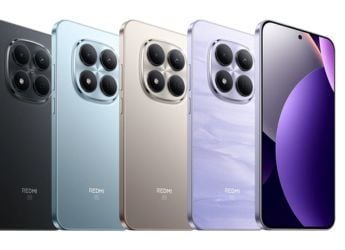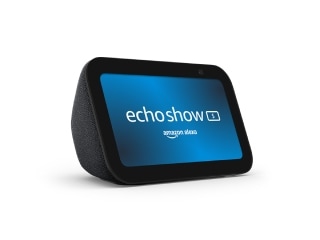- Home
- Telecom
- Telecom Features
- How eSIM Cards Will Benefit Consumers
How eSIM Cards Will Benefit Consumers

A SIM card is the small chip offered by telecom operators that you put into your phone to get cellular connectivity. These can be removed, which lets you switch from one phone to another while retaining the same number. There’s a movement happening now in the industry that could spell the death-knell for the tiny integrated circuit.
The GSMA (or GSM Association) is an organisation that represents the interests of 800 telcos worldwide, and hundreds of other related companies. Of late, it has been vocal about Remote SIM Provisioning with the use of an embedded SIM (or eSIM), primarily for devices where putting a SIM card isn’t feasible.
An eSIM is a programmable SIM card that can be permanently fitted into devices such as smartwatches during manufacturing. We spoke to Gareth Davies, Director of Public Relations at the GSMA, to try and understand what benefits eSIM cards can unlock.
“Given the form factor of the embedded SIMs they will enable a range of new, lighter mobile connected devices, such as smaller wearable technology devices," says Davies. "This is a consequence of the embedded SIM design, which uses a much smaller secure element in the mobile device, replacing the traditional SIM card and associated holder”.
There have already been murmurs of smartphones going the eSIM way too. After all, phone hardware too can benefit from the removal of the SIM card slot. Real estate inside a smartphone is expensive, as evidenced by the removal of the 3.5mm headphone jack from phones such as the iPhone 7, the LeEco Le 2, and the Moto Z. Removing the jack gave phone-makers more room inside for more components, battery, and possibly even eased the process of making a device water resistant, with one less point of liquid ingress.
“The GSMA is working with mobile network operators, device manufacturers and SIM manufacturers to create a common, global specification for the remote over-the-air provisioning and management of provisioning subscriptions to mobile networks for consumer devices," says Davies. "This will allow consumers to download operator credentials directly to the SIM embedded in their device, such as a tablet, wearable or smartphone with the mobile network operators of their choice. After a first release of the specification covering the provisioning of a companion device (which is any consumer device except a phone or a smartphone), the GSMA will publish a second version that will cover the provisioning of any devices, including a phone or a smartphone, in the next few days."
So what are the other advantages of smartphones switching to eSIM cards? For one thing, this switch might make life easier for people who travel abroad a lot. International roaming rates almost always are ludicrously expensive, requiring most of us to choose from the following three options - either use the phone only on Wi-Fi, find a place to buy a local SIM upon arrival, or use a service like Matrix to get a SIM before travel begins. This process could change - or at least become a lot simpler because of eSIM cards, and there's already a partial precedent.
In 2014, we saw the launch of the Apple SIM, a reprogrammable SIM card available for the iPad Air 2 and iPad Pro, which in many regions today lets users pick a data plan when they land abroad.
“Remote SIM Provisioning will not replace the roaming services provided by operators, where a user is reachable and can reach others irrespective of where consumers travel," explains Davies. "It is inevitable that consumers will seek value for money for all services provided by operators, including when travelling. As the market evolves, solutions will evolve and the products offered to consumers and the technology they use to provide these services.”
In countries like India and China, the use of two SIM cards in one phone is a popular phenomenon. This use case isn’t addressed by the current eSIM specification though, but Davies says that it “may be a topic that we will cover in a future version.”
Some other benefits eSIM cards are easier to speculate. SIM cards were made a bit smaller (micro SIM) and then some more (nano SIM), to the point where they’re smaller than most people’s thumbnails. That makes them extremely easy to lose, especially when you have more than one SIM to manage, and a phone that doesn’t have multi SIM card slots (like the iPhone). Then there’s the wear-and-tear which is accelerated if you keep swapping SIMs often, resulting in damage to the golden contacts, that causes an unreliable connection.
But we presume it’s not going to be all sunshine and rainbows. A shift like this will require massive collaboration between manufacturers, operators and others. It will be a feat that may cause temporary confusion and headaches for some, but hopefully will be beneficial in the long term.
Catch the latest from the Consumer Electronics Show on Gadgets 360, at our CES 2026 hub.
Related Stories
- Samsung Galaxy Unpacked 2025
- ChatGPT
- Redmi Note 14 Pro+
- iPhone 16
- Apple Vision Pro
- Oneplus 12
- OnePlus Nord CE 3 Lite 5G
- iPhone 13
- Xiaomi 14 Pro
- Oppo Find N3
- Tecno Spark Go (2023)
- Realme V30
- Best Phones Under 25000
- Samsung Galaxy S24 Series
- Cryptocurrency
- iQoo 12
- Samsung Galaxy S24 Ultra
- Giottus
- Samsung Galaxy Z Flip 5
- Apple 'Scary Fast'
- Housefull 5
- GoPro Hero 12 Black Review
- Invincible Season 2
- JioGlass
- HD Ready TV
- Laptop Under 50000
- Smartwatch Under 10000
- Latest Mobile Phones
- Compare Phones
- Tecno Spark Go 3
- iQOO Z11 Turbo
- OPPO A6c
- Samsung Galaxy A07 5G
- Vivo Y500i
- OnePlus Turbo 6V
- OnePlus Turbo 6
- Itel Zeno 20 Max
- Lenovo Yoga Slim 7x (2025)
- Lenovo Yoga Slim 7a
- Realme Pad 3
- OPPO Pad Air 5
- Garmin Quatix 8 Pro
- NoiseFit Pro 6R
- Haier H5E Series
- Acerpure Nitro Z Series 100-inch QLED TV
- Asus ROG Ally
- Nintendo Switch Lite
- Haier 1.6 Ton 5 Star Inverter Split AC (HSU19G-MZAID5BN-INV)
- Haier 1.6 Ton 5 Star Inverter Split AC (HSU19G-MZAIM5BN-INV)

















